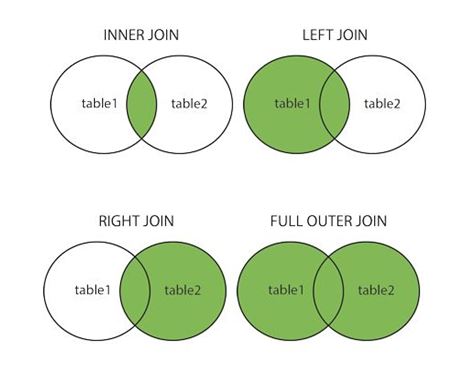Imagine you are having two sets of data that you have to combine to perform analysis. While using SQL, records from two or more tables in a database can be combined using SQL joins. Similarly, there are options in Python as well to concatenate data frames. So what is a data frame? A data frame in Python has multiple rows and columns. It is similar to a table in SQL. You have the pandas software library for data analysis in Python. Pandas concatenate data frames help us to combine data frames based on a certain logic.
The different ways of combining data frames:
- Inner Join: Inner join is quite akin to the intersection of two sets. In case of an inner join, a data frame is returned containing only those rows having common properties. Thus each row in the two combined data frames should have matching column values.
- Left Join: A left join returns all rows from the left data frame and only the matching rows from the right data frame.
- Right Join: A right join returns all rows from the right data frame and only the matching rows from the left data frame.
- Full or Outer Join: A full join keeps all the rows from both the left data frame and the right data frame.
Let us now look at the functions present in Pandas to combine data frames or series.
Functions in Pandas
1. Join function
As we have read, Python has a lot of SQL like features available for combining data. Data frames have an index that acts as an address. Usually, row indices are referred to as index while columns are addressed by the column names. The Join operation allows you to merge all the columns from two data frames. You can rename the left and right column by updating the “lsuffix” and “rsuffix” parameters. You get an option to choose the way of merging by updating the “how” parameter.
2. Merge function
The merge function is quite similar to the join operation. However, you get flexible control while combining all the columns from two data frames. You can use on = Column Name to merge data frames on the common column. You can update left_on = Column Name or right_on = Column Name to align tables using columns from the left or right data frame as keys. Choosing left_index = True or right_index = True, allows you to use the row labels from the left data frame or right data frame as join keys.
Syntax:
DataFrame.merge(self, right, how=’left’, on=None, left_on=None,
right_on=None, left_index=False, right_index=False, sort=False, suffixes=(‘_x’, ‘_y’), copy=True, indicator=False, validate=None)
Our learners also read: Learn Python Online for Free
upGrad’s Exclusive Data Science Webinar for you –
Explore our Popular Data Science Courses
3. Concat function
Using the Concat function, you can combine data on columns or rows based on your choice. You can set the logic of joining (left/right/inner/full join) on either of the two axes. You also get an option to check if the new concatenated axis has duplicate values present using verify_integrity. If no index value is specified on the concatenation axis, the resultant axis will be labeled as 0,1,… n-1. The keys parameter allows you to form hierarchical indexing using the keys passed.
Syntax
pandas.concat(objs, axis=0, join=’left’, join_axes=None,
ignore_index=False, keys=None, levels=None, names=None,
verify_integrity=False, sort=None, copy=True)
Read: Data Structure Algorithm in Python
Top Data Science Skills to Learn
| SL. No | Top Data Science Skills to Learn | |
| 1 | Data Analysis Programs | Inferential Statistics Programs |
| 2 | Hypothesis Testing Programs | Logistic Regression Programs |
| 3 | Linear Regression Programs | Linear Algebra for Analysis Programs |
Wrapping Up
As we have seen in pandas.DataFrame, merge, and join functions are used to combine data frames working on columns. There is also an option to rename columns based on the suffix provided. The merge function offers more flexibility in the case of row-wise alignment. On the contrary, the Concat function of pandas can operate on either rows or columns.
No renaming of columns is done while using the Concat function. Pandas concatenate data frames is an essential feature when we have to combine two data frames. Merging two data frames using certain conditions helps you prepare the data needed for analysis and other tasks. Thus for the software library pandas concatenate data frames is an integral function.
Read our popular Data Science Articles
Are you interested to learn more about the various functions available in pandas and delve deeper into Data Analytics? You can check PG Diploma in Data Science offered by upGrad. The courses are conducted by industry experts and will help you learn more about exploratory data analysis, various data visualization techniques, and algorithms on Machine Learning. Kick start your career in the field of Data Analytics and Machine Learning with upGrad.

![Pandas Concatenate Data Frames [2024]](/__khugblog-next/image/?url=https%3A%2F%2Fd14b9ctw0m6fid.cloudfront.net%2Fugblog%2Fwp-content%2Fuploads%2F2020%2F09%2F996.png&w=1920&q=75)





















![Top 13 Highest Paying Data Science Jobs in India [A Complete Report]](/__khugblog-next/image/?url=https%3A%2F%2Fd14b9ctw0m6fid.cloudfront.net%2Fugblog%2Fwp-content%2Fuploads%2F2020%2F08%2F904-scaled.jpg&w=3840&q=75)
![Most Common PySpark Interview Questions & Answers [For Freshers & Experienced]](/__khugblog-next/image/?url=https%3A%2F%2Fd14b9ctw0m6fid.cloudfront.net%2Fugblog%2Fwp-content%2Fuploads%2F2020%2F09%2F991.png&w=3840&q=75)



![Inheritance in Python | Python Inheritance [With Example]](/__khugblog-next/image/?url=https%3A%2F%2Fd14b9ctw0m6fid.cloudfront.net%2Fugblog%2Fwp-content%2Fuploads%2F2020%2F12%2F1434.png&w=3840&q=75)


![Sorting in Data Structure: Categories & Types [With Examples]](/__khugblog-next/image/?url=https%3A%2F%2Fd14b9ctw0m6fid.cloudfront.net%2Fugblog%2Fwp-content%2Fuploads%2F2020%2F05%2F493-Sorting-in-Data-Structure.png&w=3840&q=75)